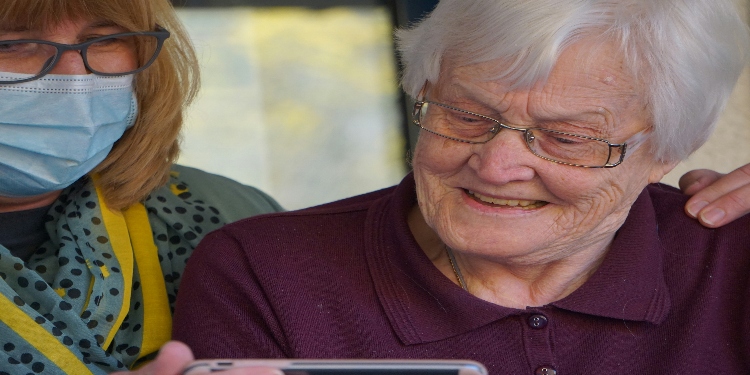Technology has become an integral part of modern life, revolutionizing how we communicate, work, and access information. While seniors may have been slower to adopt technology compared to younger generations, there’s a growing recognition of its potential to improve the lives of older adults. From enhancing social connections to promoting health and safety, senior-friendly technology offers numerous benefits for aging individuals. In this article, we explore the evolving landscape of technology tailored to the needs and preferences of seniors, highlighting its impact and potential for empowering older adults.
As the population ages, there’s a growing need for technology that addresses the unique challenges and preferences of seniors. From declining physical and cognitive abilities to social isolation and healthcare needs, older adults face a range of issues that can be addressed or alleviated through technology. By designing products and services with seniors in mind, technology companies can create solutions that enhance independence, connectivity, and overall quality of life for aging individuals.
Key Features of Senior-Friendly Technology:
- Simplified Interfaces: Senior-friendly technology often features intuitive interfaces with larger fonts, clear icons, and simple navigation menus, for example big button mobile phones. This design approach makes it easier for older adults to access and use digital devices and applications, reducing frustration and promoting independence.
- Accessibility Features: Many senior-friendly devices and software incorporate accessibility features such as voice recognition, text-to-speech, and magnification tools. These features accommodate seniors with vision or hearing impairments, ensuring they can effectively interact with technology and access information.
- Remote Monitoring and Telehealth: Telehealth platforms and remote monitoring devices enable seniors to access healthcare services and manage chronic conditions from the comfort of their homes. From virtual doctor’s appointments to wearable health trackers, these technologies empower older adults to take control of their health and well-being.
- Social Connectivity: Social isolation is a significant concern among seniors, but technology can help bridge the gap by facilitating virtual connections with friends, family, and community members. Video calling platforms, social media networks, and online forums provide opportunities for older adults to stay connected and engaged with others.
- Safety and Security Features: Senior-friendly technology often includes built-in safety and security features to protect older adults from scams, fraud, and emergencies. This may include features such as emergency alert systems, automatic fall detection, and identity theft protection services.
- Assistive Devices: Assistive devices such as smart home technology, mobility aids, and personal emergency response systems can enhance safety and independence for seniors. These devices automate household tasks, provide assistance with mobility, and offer peace of mind in case of emergencies.
Examples of Senior-Friendly Technology:
- GrandPad: GrandPad is a tablet designed specifically for seniors, featuring simplified navigation, video calling, photo sharing, and access to curated content and apps. With built-in security features and remote monitoring capabilities, GrandPad provides a safe and easy way for older adults to stay connected with loved ones and engage with digital content.
- Wearable Health Trackers: Wearable devices such as smartwatches and fitness trackers monitor vital signs, activity levels, and sleep patterns, providing valuable insights into seniors’ health and well-being. These devices can help seniors track their fitness goals, manage chronic conditions, and alert caregivers or healthcare providers in case of emergencies.
- Voice-Activated Assistants: Voice-activated assistants like Amazon Alexa and Google Assistant offer hands-free access to information, entertainment, and smart home controls. Seniors can use voice commands to set reminders, play music, check the weather, and control smart home devices, enhancing convenience and accessibility in their daily lives.
- Medication Management Apps: Medication management apps help seniors organize their medications, set reminders for taking pills, and track their adherence to prescribed regimens. These apps can reduce the risk of medication errors and ensure seniors stay on track with their treatment plans, promoting better health outcomes.
- Smart Home Technology: Smart home devices such as smart thermostats for modern boilers, lighting systems, and security cameras can enhance safety, comfort, and energy efficiency for seniors. These devices allow older adults to control their home environment remotely, automate routine tasks, and receive alerts about potential hazards or emergencies.
Benefits of Senior-Friendly Technology:
- Independence: Senior-friendly technology empowers older adults to maintain their independence and autonomy by providing tools and resources to support daily living activities.
- Social Connectivity: Technology enables seniors to stay connected with friends, family, and community members, reducing feelings of loneliness and isolation.
- Health and Well-being: Telehealth platforms, wearable health trackers, and medication management apps help seniors manage their health and well-being more effectively, promoting better outcomes and quality of life.
- Safety and Security: Built-in safety features and assistive devices enhance safety and security for seniors, providing peace of mind for both older adults and their caregivers.
- Cognitive Stimulation: Digital devices and applications offer opportunities for cognitive stimulation and lifelong learning, helping seniors stay mentally active and engaged as they age.
Challenges and Considerations: While senior-friendly technology offers numerous benefits, there are also challenges and considerations to address. These may include:
- Digital Literacy: Many seniors may lack experience or confidence in using technology, requiring support and education to become proficient users.
- Affordability: Cost can be a barrier to accessing senior-friendly technology, particularly for older adults on fixed incomes.
- Accessibility: Ensuring that technology is accessible to seniors with disabilities or impairments requires attention to design and usability considerations.
- Privacy and Security: Protecting older adults’ personal information and safeguarding against cybersecurity threats are critical considerations when deploying technology solutions for seniors.
- User Experience: Technology should be designed with seniors’ needs, preferences, and capabilities in mind, prioritizing simplicity, clarity, and ease of use.
Conclusion:
Senior-friendly technology has the potential to transform the lives of older adults, empowering them to stay connected, independent, and healthy as they age. By incorporating features such as simplified interfaces, accessibility options, remote monitoring capabilities, and safety features, technology companies can create products and services that meet the unique needs and preferences of seniors. With ongoing innovation, education, and support, senior-friendly technology can play a pivotal role in enhancing the well-being and quality of life of aging individuals now and in the future











































































